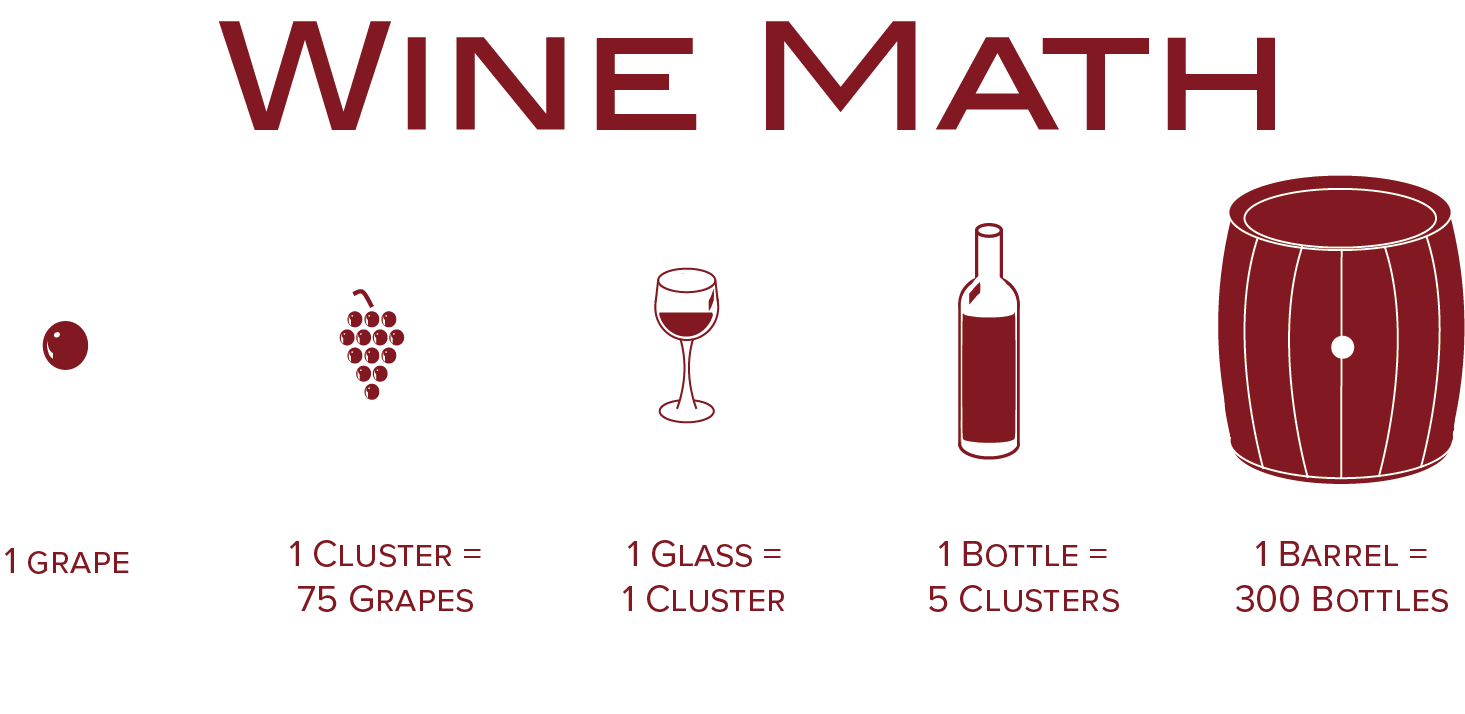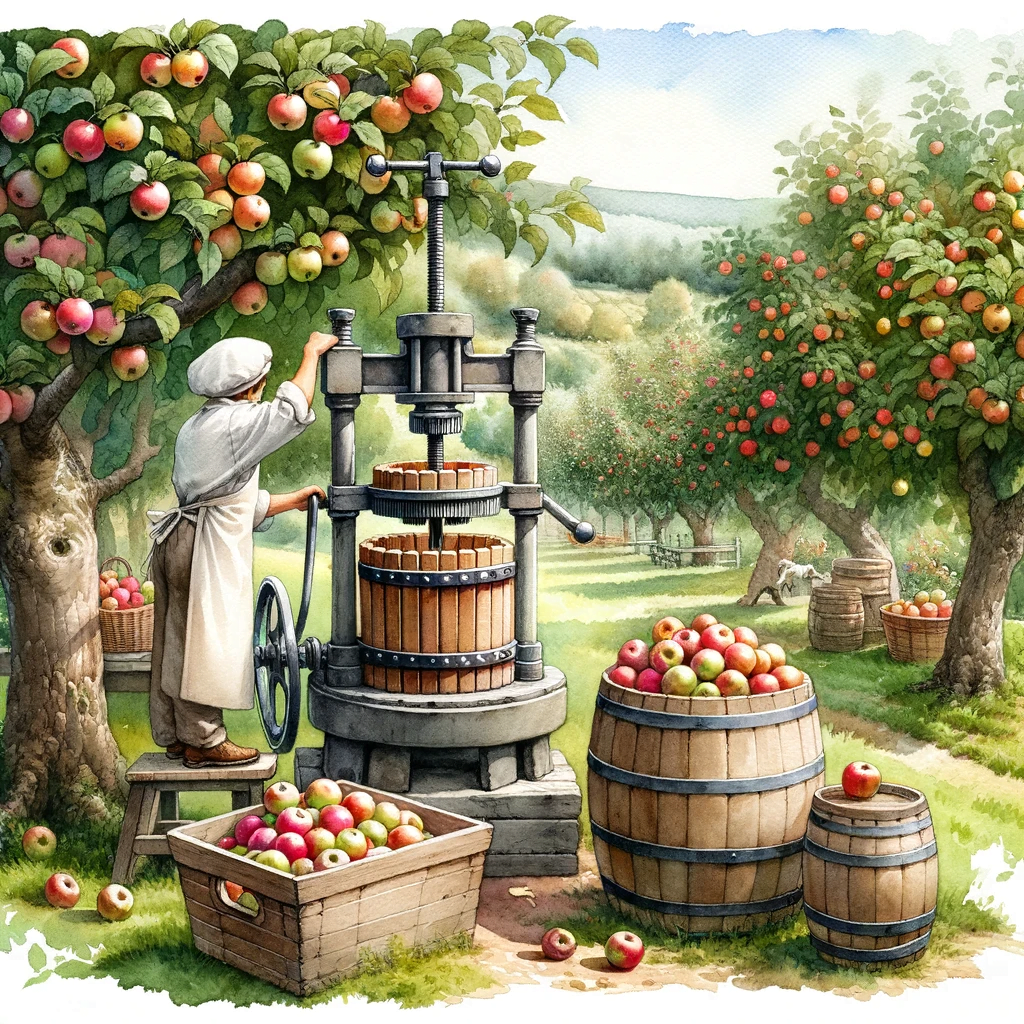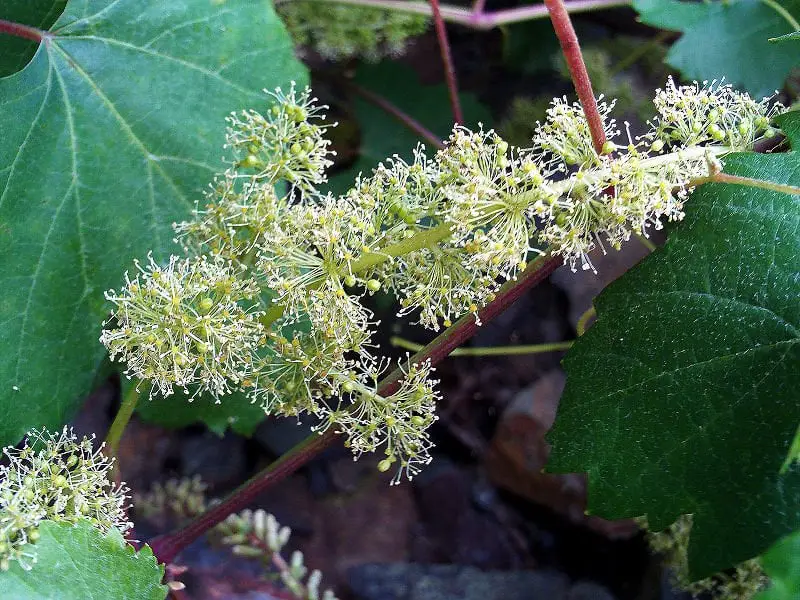You’ve probably wondered when the perfect moment is to pluck those luscious grapes off the vine. Well, fret no more, because we’re here to answer that very question. The ideal time to harvest grapes is when they have reached their peak ripeness, bursting with flavor and sweetness. But how can you tell when that moment arrives? In this article, we’ll explore the signs and indicators that indicate the grapes are ready for harvesting, ensuring you’re able to enjoy the juiciest grapes straight from your backyard vineyard.
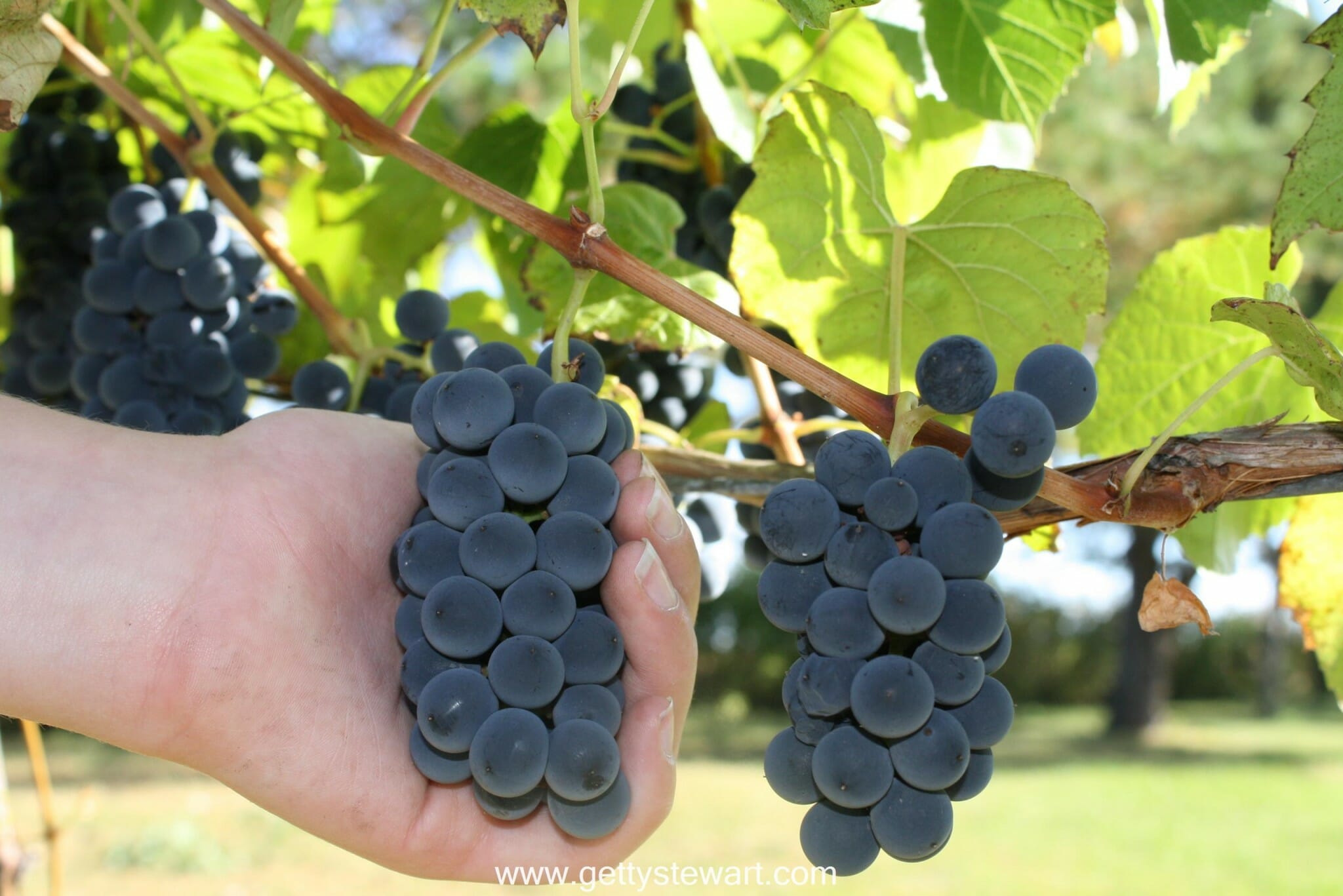
Factors Affecting Grape Ripening
Grape ripening is influenced by several factors that play a crucial role in determining when the grapes are ready to be harvested. These factors include temperature, sunlight exposure, grape variety, leaf removal, and water availability. Let’s delve into each of these factors to understand their impact on grape ripening.
Temperature
Temperature plays a vital role in grape ripening as it affects the rate at which the grapes develop and ripen. Generally, grapes require warm temperatures during the growing season to mature properly. Cooler temperatures can delay the ripening process, while excessively hot temperatures can lead to overripeness and loss of acidity. The optimal temperature range for grape ripening varies depending on the grape variety, but a moderate climate is generally preferred.
Sunlight Exposure
Sunlight exposure is another critical factor that affects grape ripening. Grapes require an adequate amount of sunlight to undergo photosynthesis, which is crucial for the production of sugars and flavors. Insufficient sunlight can result in underripe grapes with low sugar content and a lack of desired flavors. On the other hand, excessive sunlight exposure can lead to sunburn and undesirable changes in the grape composition. Proper canopy management and vineyard orientation can help optimize sunlight exposure for grape ripening.
Grape Variety
Different grape varieties have different ripening characteristics. Some varieties ripen early in the season, while others reach maturity later. Furthermore, each grape variety has specific requirements in terms of temperature, sunlight exposure, and water availability. It is essential to consider the ripening characteristics of the grape variety being cultivated to determine the optimal time for harvesting.
Leaf Removal
Leaf removal, also known as defoliation, is a technique used to expose the grape clusters to sunlight. By removing some leaves around the grape clusters, vineyard managers can enhance sunlight penetration and air circulation, thus promoting grape ripening. Leaf removal is typically done at specific stages of grape development, depending on the desired outcome and grape variety. However, it should be done carefully to avoid excessive exposure of grapes to the sun, which can lead to sunburn and other detrimental effects.
Water Availability
Water availability is crucial for grape ripening as it affects the growth and development of the grapevines. Adequate water supply is necessary to support the metabolic processes involved in grape ripening. However, excessive irrigation or rainfall during the ripening phase can result in dilution of flavors and increased susceptibility to fungal diseases. The timing and amount of water provided to the grapevines must be carefully managed to ensure optimal grape ripening.
Best Time to Harvest Grape Varieties
The time of harvest for grape varieties depends on their ripening characteristics. Different grape varieties fall into three main ripening categories: early ripening, midseason ripening, and late ripening. Understanding the ripening patterns of these varieties can help determine the best time to harvest.
Early Ripening Varieties
Early ripening grape varieties, as the name suggests, reach maturity earlier in the growing season. These varieties often have a shorter growing cycle and require less time to develop the desired characteristics. They tend to have lower acidity levels and higher sugar content compared to late ripening varieties. Some examples of early ripening grape varieties include Chardonnay, Pinot Noir, and Sauvignon Blanc. These grapes are typically harvested in late summer to early fall.
Midseason Ripening Varieties
Midseason ripening grape varieties take a moderate amount of time to reach maturity. They strike a balance between sugar levels and acidity, providing a wide range of flavor profiles. Examples of midseason ripening grape varieties include Cabernet Sauvignon, Merlot, and Syrah. These grapes are usually harvested in mid to late fall, depending on their specific ripening characteristics.
Late Ripening Varieties
Late ripening grape varieties have an extended growing season and require more time to fully mature. These varieties often retain higher levels of acidity and develop complex flavors over a longer period. Examples of late ripening grape varieties include Nebbiolo, Petit Verdot, and Riesling. These grapes are typically harvested in late fall or even early winter, depending on the specific climatic conditions of the region.
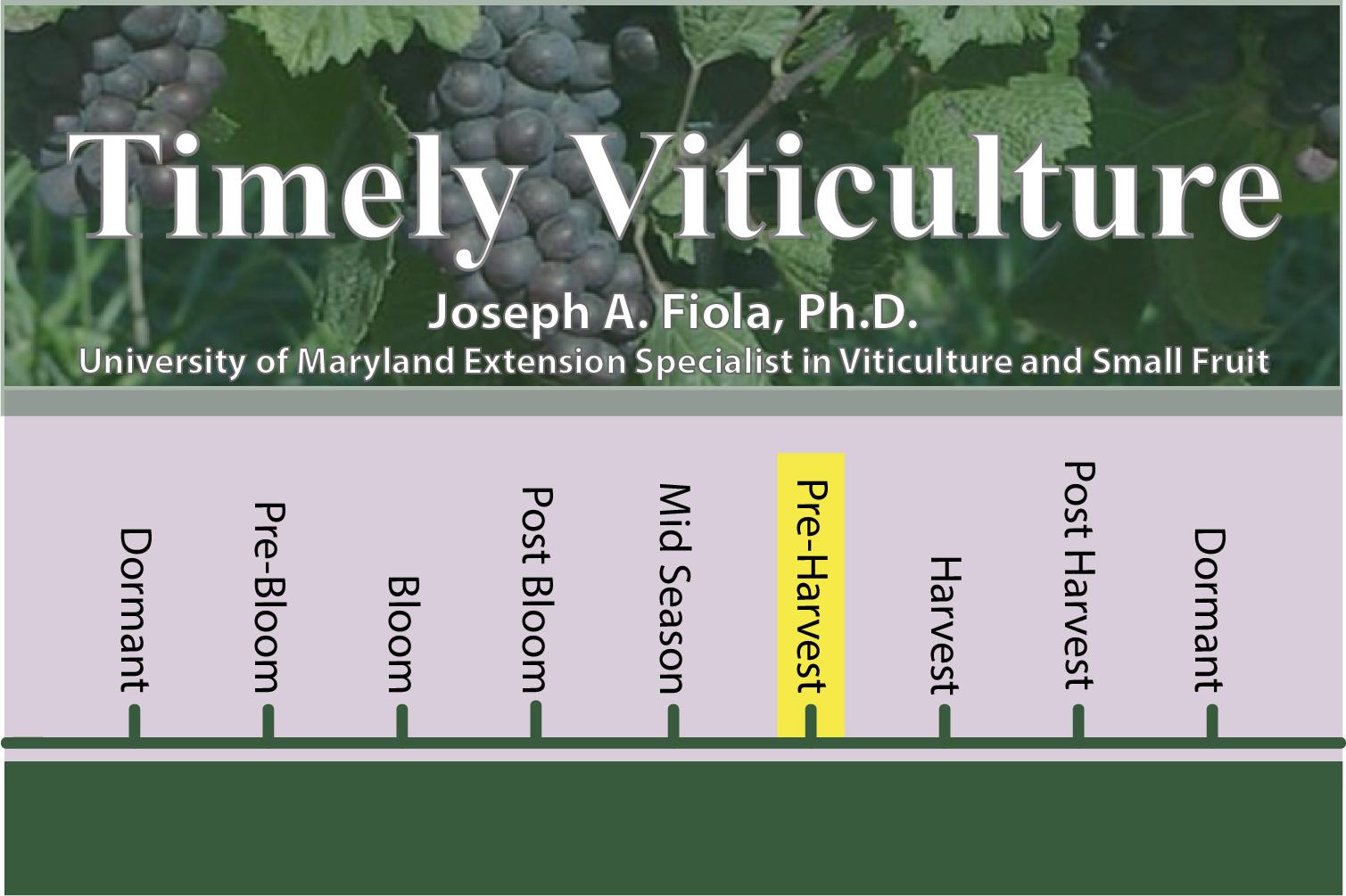
Visual and Physical Indicators of Grape Ripeness
Observing visual and physical indicators can provide valuable insights into the ripeness of grapes. These indicators can help determine the ideal time for harvest.
Color Change
One of the most noticeable indicators of grape ripeness is a change in color. As grapes ripen, their color transforms from bright green to various shades of red, purple, or yellow, depending on the grape variety. For red grape varieties, the color change is particularly evident as the grapes transition from green to red or purple. White grape varieties may show a shift from green to golden or amber hues. Monitoring the color change can give you a good estimate of the ripeness level.
Texture
The texture of grape skins also undergoes changes as they ripen. Immature grapes have firm and taut skins, while ripe grapes develop a slightly softer and more pliable texture. By gently squeezing the grapes, you can assess whether the skins yield slightly, indicating ripeness. However, it is crucial to be gentle to avoid damaging the grapes or altering their appearance.
Size
The size of grapes can be an indicator of ripeness, although it should not be the sole determining factor. As grapes ripen, they generally increase in size, becoming fuller and plumper. However, variation in size can occur due to different grape varieties and growing conditions. Comparing the size of grapes within a cluster or across multiple vines can provide insight into their ripeness level.
Seed Color
The color of grape seeds can provide additional information about ripeness. Immature grape seeds are typically green or pale in color. However, as grapes ripen, the seeds tend to darken and turn brown. Observing the color change in the seeds can be a helpful indicator of grape maturity.
Observing Sugar Levels
To get a more accurate assessment of grape ripeness, it is essential to measure the sugar levels, also known as Brix. This requires the use of a refractometer, a tool that measures the sugar content in grape juice. As grapes ripen, the sugar levels increase, indicating a higher level of sweetness. Regularly monitoring the sugar levels in the grapes can help determine the optimal time for harvest.
Methods to Determine Grape Ripeness
In addition to visual and physical indicators, several methods can be employed to determine the ripeness of grapes. These methods provide more precise measurements and are commonly used by winemakers and viticulturists to ensure optimal harvest timing.
Brix Testing
Brix testing involves measuring the sugar content in grape juice using a refractometer. This method provides a quick and relatively accurate measurement of grape ripeness. Brix levels of the grapes can give an indication of the potential alcohol content in the resulting wine. The desired Brix level varies depending on the intended wine style and grape variety.
Acidity Testing
Acidity testing involves measuring the total acidity of grape juice using a pH meter or titration kit. Acidity is a crucial component of grape ripeness as it contributes to the overall balance and freshness of the resulting wine. By measuring the acidity levels, winemakers can ensure that the grapes have reached the desired level of ripeness while maintaining the necessary acidity for quality wine production.
pH Testing
pH testing is another method used to assess grape ripeness. pH measures the level of acidity or alkalinity in the grape juice. Tracking the pH levels can help determine the physiological ripeness of the grapes and ensure that they have achieved the optimal balance of acidity. Different grape varieties and wine styles require specific pH ranges for optimal quality.
Taste Testing
Taste testing, also known as sensory evaluation, involves sampling the grapes and evaluating their flavor profile. This method allows winemakers and viticulturists to assess the overall sensory attributes, including sweetness, acidity, and flavor intensity. By tasting the grapes at different stages of ripeness, professionals can determine the optimal time for harvest based on the desired flavor profile.
Seed Hardness Testing
Seed hardness testing is a tactile method used to assess grape ripeness. As grapes mature, the seeds tend to harden, providing an indication of ripeness. By gently biting or crushing the seeds, experienced individuals can evaluate the level of hardness. However, this method requires experience and may not be suitable for large-scale assessments.

Harvesting Techniques
Once the grapes have reached optimal ripeness, they are ready to be harvested. Various harvesting techniques are employed to ensure that the grapes are harvested efficiently and with minimal damage to the fruit.
Hand Harvesting
Hand harvesting involves manually picking the grapes, either individually or by cutting entire grape clusters from the vine. This method is commonly used for premium and delicate grape varieties, where precision and careful handling are essential. Hand harvesting allows for selective picking, ensuring that only fully ripe and healthy grapes are harvested. It is a labor-intensive method but is often preferred for high-quality wines.
Machine Harvesting
Machine harvesting involves the use of mechanical harvesters that mechanically shake the grapevines, causing the grapes to detach and fall onto a conveyor or directly into collection bins. This method is more time and cost-efficient than hand harvesting and is commonly used for larger vineyards or for grape varieties that are mechanically suitable. However, machine harvesting requires careful monitoring to ensure that only ripe grapes are harvested and that the vines are not damaged during the process.
Selective Picking
Selective picking involves selectively harvesting grape clusters or individual grapes at different stages of ripeness within the same vineyard block. This method is commonly used for producing wines with complex flavor profiles or for separating grape batches that will be used for specific wine styles. Selective picking allows winemakers to have more control over the final flavor composition of the wine.
Whole Cluster Harvesting
Whole cluster harvesting is a technique where the entire grape cluster, including the stems, is harvested intact. This method is commonly used for the production of certain wine styles, such as sparkling wines or some red wines. Harvesting the grapes as whole clusters can contribute to unique flavor characteristics, as the stems can impart additional aromas and tannins during fermentation.
Factors to Consider Before Harvesting
Before proceeding with grape harvesting, several factors need to be carefully considered. These factors can significantly impact the quality of the grapes and the resulting wine.
Weather Conditions
Weather conditions play a crucial role in grape ripening and harvesting. Adverse weather, such as heavy rainfall or hailstorms, can negatively affect grape quality and increase the risk of disease. It is important to monitor the weather forecast and time the harvest accordingly to minimize any potential damage. Optimal weather conditions for harvest typically involve dry and sunny days with moderate temperatures.
Sugar Levels
Monitoring the sugar levels or Brix of the grapes is essential in determining their readiness for harvest. The desired Brix level varies depending on the grape variety and the desired wine style. Harvesting too early may result in underripe grapes with low sugar content, while harvesting too late can lead to overripeness and excessively high sugar levels. Regular sampling and testing of the grapes can help ensure that the optimal sugar levels are achieved.
Acidity Levels
Acidity is a critical component of grape quality and wine balance. The acidity levels should be carefully monitored to ensure that the grapes have reached the desired ripeness while maintaining proper acidity. If the grapes are harvested too early, the acidity may be too high, resulting in a tart or sharp tasting wine. Conversely, if the grapes are harvested too late, the acidity may decrease, leading to a flabby or dull wine. Balancing acidity with sugar levels is essential for optimal wine quality.
Presence of Diseases
Before harvesting, it is crucial to assess the health of the grapevines and the presence of any diseases or infections. Diseases such as botrytis or powdery mildew can affect grape quality and compromise the resulting wine. If significant disease pressure is detected, appropriate measures should be taken, such as applying fungicides or selectively harvesting unaffected grapes. Harvesting disease-free grapes is crucial for ensuring high-quality wine production.
Ripeness Uniformity
Another factor to consider before harvesting is the ripeness uniformity within the vineyard. It is ideal to ensure that the majority of the grapes within a vineyard block have reached an optimal level of ripeness. Harvesting grapes of varying ripeness can result in blending challenges and inconsistencies in the final wine. Regular sampling and observation of grape development can help identify any variations and allow for selective harvesting if necessary.

Timing Factors for Different Wine Types
The timing of grape harvest also varies depending on the intended wine style. Different wine types require unique ripeness levels to achieve the desired characteristics.
Sparkling Wines
For sparkling wines, grapes are usually harvested earlier compared to other wine types to ensure higher acidity levels and lower sugar content. The grapes need to provide a solid base for the secondary fermentation process that creates the sparkle. The acidity and lower sugar levels in the grapes contribute to the refreshing and vibrant characteristics of sparkling wines.
White Wines
White wines are typically made from grapes that are harvested when they have reached a good balance between sugar levels and acidity. The grapes need to have enough sugar to provide the desired fruitiness and flavor, while retaining sufficient acidity to ensure freshness and balance. Harvesting white grapes too late can lead to a decrease in acidity and the loss of aromatic compounds.
Rosé Wines
Rosé wines can be made from either red or white grape varieties, with different methods determining the desired color and flavor. For rosé wines made using the maceration method, red grapes are typically harvested slightly earlier than for red wines. This allows for a shorter period of skin contact, resulting in a lighter color extraction. For rosé wines made using the saignée method, where a portion of juice is bled off from red grapes during fermentation, the timing of harvest is similar to that of red wines.
Red Wines
When harvesting grapes for red wines, the aim is to achieve optimal ripeness levels in terms of sugar content, tannin maturity, and flavor development. Red grapes are usually harvested when they have reached a balance between sugar levels and tannin ripeness. The skins of the grapes play a crucial role in red wine production, providing color, tannins, and aromas during fermentation. Harvesting grapes too early can result in underripe flavors and harsh tannins, while harvesting too late can lead to overripe flavors and excessive tannin extraction.
Late Harvest Wines
Late harvest wines are made from grapes that are allowed to remain on the vine for an extended period to achieve higher sugar levels and concentration. These grapes are typically affected by noble rot or botrytis cinerea, which partially dehydrates the berries, increasing their sugar content and flavor intensity. The harvest for late harvest wines can happen late in the season or even in winter, depending on the desired level of sweetness and botrytis development.
The Significance of Harvesting at the Right Time
Harvesting grapes at the right time is crucial for the overall quality and characteristics of the resulting wine.
Impact on Wine Quality
The timing of harvest significantly impacts the quality of the wine. Harvesting underripe grapes can result in wines lacking in flavor, aroma, and complexity. Conversely, harvesting overripe grapes can lead to wines with exaggerated flavors, flabby texture, and loss of balance. By harvesting at the optimal time, winemakers can ensure that the grapes possess the desired balance of sugar, acidity, and phenolic compounds, resulting in high-quality wines.
Effects on Sugar and Acid Balance
The sugar and acid balance in the grapes is fundamental to achieving a harmonious and well-balanced wine. Harvesting grapes at the right time allows winemakers to capture the desired level of sweetness while maintaining the necessary acidity. The balance between sugar and acidity is crucial for the perceived sweetness, freshness, and ageability of the wine. Harvesting too early or too late can disrupt this delicate balance, resulting in wines that are either unbalanced or lack complexity.
Influence on Grape Aromatics
The timing of harvest also influences the aromatic compounds present in the grapes. As grapes ripen, they develop a diverse range of aromas, including fruity, floral, and herbal notes. Harvesting grapes at the optimal stage of ripeness allows winemakers to capture the maximum aromatic potential. Overripe grapes may contain excessive levels of certain compounds, resulting in overpowering aromas or loss of delicate nuances. Harvesting at the right time ensures a balance of aromatic compounds that contribute to the wine’s complexity and character.
Prevention of Overripeness
Harvesting grapes at the right time is essential to prevent overripeness. Overripe grapes can lead to higher sugar levels, lower acidity, and loss of desirable flavors. Additionally, overripe grapes are more susceptible to fungal diseases and can result in suboptimal wine quality. Harvesting at the optimal ripeness stage helps ensure that the grapes have achieved the desired flavor development without veering into the realm of overripeness.

Challenges Faced During Grape Harvesting
Grape harvesting can be accompanied by various challenges that can affect both the quality and quantity of the harvested grapes.
Bird Damage
Birds present a significant challenge during grape harvesting as they can cause considerable damage to the fruit. Birds are attracted to the sweetness of the grapes and can peck at or consume large portions of the fruit, resulting in crop losses. Protecting the vineyards from birds may involve netting or using bird scare devices to deter them from the vineyard area during harvest time.
Berry Shrivel
Berry shrivel refers to the dehydration of grapes, often caused by excessive heat or drought conditions. As grapes lose moisture, they shrink in size, affecting the overall quality and flavor concentration. Shriveled grapes can result in lower yields and may require additional selective harvesting to ensure that only healthy grapes are collected.
Botrytis Infection
Botrytis cinerea, also known as noble rot, can affect grapes, particularly those for late harvest or dessert wines. While botrytis can contribute to the concentration and complexity of flavors, it can also lead to the development of undesirable flavors and spoilage. Careful monitoring and selective picking of grapes affected by botrytis are necessary to ensure the production of high-quality wines.
Sunburnt Grapes
Excessive exposure to sunlight can lead to sunburn on grape berries. Sunburnt grapes develop undesirable flavors and can contribute to oxidative reactions during fermentation. It is crucial to manage the vine canopy and provide adequate shading to protect the grapes from direct sunlight, particularly in regions with intense sunlight or high temperatures.
Uneven Ripening
Uneven ripening of grapes within a vineyard block can pose challenges during harvest. If different areas of the vineyard have varying ripeness levels, it becomes difficult to achieve uniform maturity in the harvested grapes. Regular sampling and observation of grape development can help identify areas of uneven ripening, allowing for selective harvesting or adjustments to vineyard management practices as needed.
Tips for Successful Grape Harvesting
To ensure a successful grape harvest, there are several tips and best practices that can be employed:
Regular Monitoring
Regular monitoring of grape development is crucial for determining the optimal time to harvest. This involves observing visual and physical indicators, as well as performing regular tests such as Brix, acidity, and pH measurements. By closely monitoring the grapes, vineyard managers and winemakers can make informed decisions regarding harvest timing.
Record Keeping
Maintaining detailed records of each vineyard block, including key dates, weather conditions, and grape development, can provide valuable insights for future harvests. Record keeping allows for historical comparisons, helping identify patterns and optimal harvest windows for specific grape varieties and vineyard locations.
Sampling Techniques
Sampling techniques, such as cluster sampling or berry sampling, can provide a representative assessment of grape maturity. Sampling should be done across various vineyard blocks and within each block to account for potential variations in microclimates or soil conditions. Care should be taken to ensure that the samples are truly representative of the overall grape population.
Harvesting in the Early Morning
Harvesting grapes in the early morning, when temperatures are cooler, can help preserve the quality of the fruit. Cooler temperatures reduce the risk of oxidation and microbial spoilage during transportation and processing. Additionally, harvesting in the morning allows for better work conditions for vineyard workers, as the temperatures are generally more comfortable.
Proper Equipment Maintenance
Regular maintenance of harvesting equipment, such as mechanical harvesters or picking bins, is essential to ensure efficient and safe operations. Equipment should be regularly inspected, cleaned, and serviced to avoid breakdowns during harvest. Any malfunctioning equipment should be addressed promptly to minimize disruptions and potential damage to the harvested grapes.
In conclusion, the optimal time to harvest grapes depends on several factors, including temperature, sunlight exposure, grape variety, leaf removal, and water availability. Visual and physical indicators, along with methods such as Brix testing, acidity testing, pH testing, taste testing, and seed hardness testing, can help determine the ripeness of grapes. Selecting the appropriate harvesting techniques, considering factors such as weather conditions, sugar and acidity levels, presence of diseases, and ripeness uniformity, is crucial for successful harvests. Implementing timely harvests specific to different wine types ensures the desired wine quality and characteristics. Harvesting at the right time influences wine quality, sugar and acid balance, grape aromatics, and prevents overripeness. Challenges during grape harvesting, such as bird damage, berry shrivel, botrytis infection, sunburnt grapes, and uneven ripening, should be managed and minimized. Following tips like regular monitoring, record keeping, proper sampling techniques, early morning harvesting, and equipment maintenance can contribute to successful grape harvests. By understanding and considering these factors, vineyard managers and winemakers can optimize the timing of grape harvests and produce exceptional wines.

